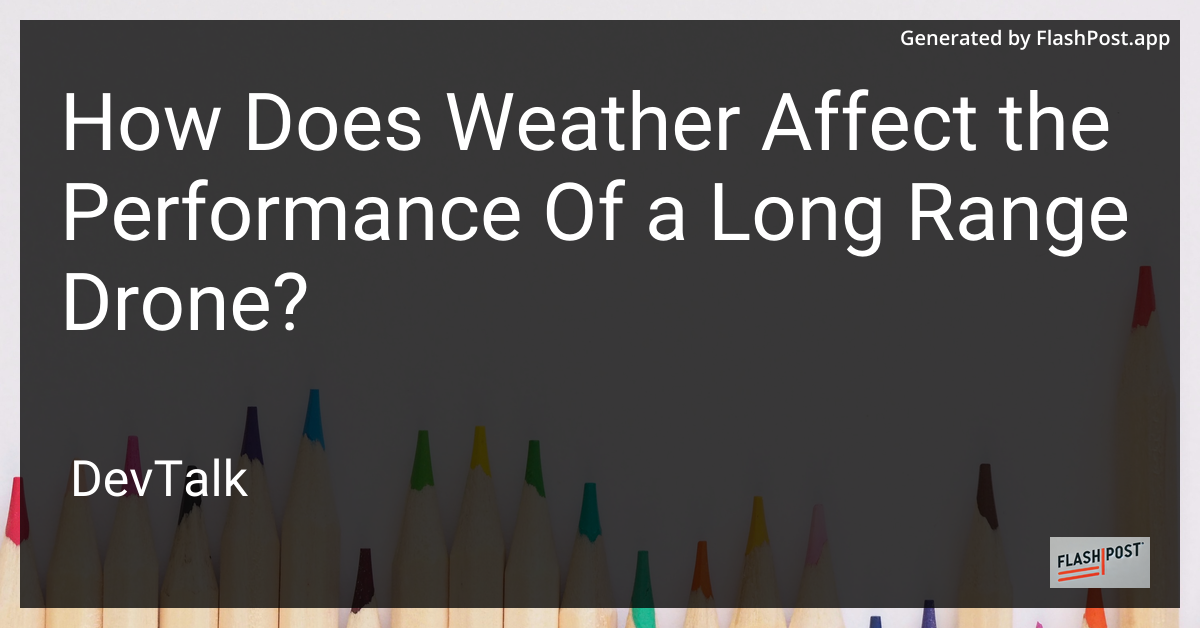How Does Weather Affect the Performance Of a Long Range Drone?
 # How Does Weather Affect the Performance of a Long-Range Drone?
# How Does Weather Affect the Performance of a Long-Range Drone?
Drones have revolutionized the way we capture imagery, conduct surveys, and perform deliveries.
Among various types, long-range drones are particularly intriguing for their ability to travel vast distances. However, weather conditions can significantly impact their performance, making it crucial for drone pilots to understand these effects to ensure optimal and safe operations.
1. Wind Speed and Direction
The most significant weather factor influencing drone performance is wind. High wind speeds can destabilize a drone, lead to erratic flight paths, and increase power consumption as the drone compensates to maintain its course. Long-range drones need to be particularly cautious since they are designed to cover longer distances and may encounter varied wind conditions.
Effects:
- Flight Stability: Strong winds can disrupt stability, posing significant risks.
- Battery Life: Fighting against the wind draws more power, reducing flight time.
- Navigation and Control: Sudden gusts can lead to navigation errors or crashes.
Tip: Always check wind forecasts before flight and avoid flying in winds exceeding the drone's specifications.
2. Rain and Humidity
Moisture is the bane of electronic devices, and drones are no exception. Rain can seep into a drone's internal components, potentially causing short circuits or corrosion. High humidity levels can also exacerbate these risks over long-duration flights.
Effects:
- Electronic Damage: Rain can cause malfunctions or permanent damage.
- Weight and Balance: Accumulated water can affect flight balance and aerodynamics.
- Visibility: Water droplets on the camera lens can obscure vision.
Tip: Waterproof your drone if possible, and avoid flying in rainy or extremely humid conditions.
3. Temperature Extremes
Both high and low temperature extremes can have adverse effects on a drone's performance. Heat can lead to battery overheating, while cold temperatures can reduce battery efficiency and lead to shorter flight times.
Effects:
- Battery Efficiency: Extreme temperatures impact battery performance and lifespan.
- Component Stress: Electronics may malfunction under thermal stress.
- Flight Duration: Reduced battery efficiency affects overall range and duration.
Tip: Monitor battery temperature and avoid flying in extreme weather conditions.
4. Precipitation
Snow, hail, and even heavy fog can present serious challenges. Snow and hail can damage a drone, while fog can interfere with navigation systems and vision sensors.
Effects:
- Structural Damage: Hail can physically damage drones.
- Visibility: Fog severely limits visibility, impacting navigation and photography.
- Sensor Interference: Precipitation can disrupt sensors like GPS and compasses.
Tip: Ensure proper weatherproofing and avoid flying in adverse precipitation conditions.
Conclusion
Long-range drones offer incredible capabilities but require careful consideration of weather conditions to operate safely and effectively. Before embarking on any drone mission, it's vital to assess the weather conditions and make informed decisions to protect your equipment and ensure mission success.
If you're interested in exploring more about drones or looking for some exciting deals on racing drones, check out our comprehensive guide on discount racing drones.
By staying informed and prepared, you can harness the full potential of your long-range drone, regardless of the weather challenges that may come your way.